April 13, 2025 | 19:34 GMT +7
April 13, 2025 | 19:34 GMT +7
Hotline: 0913.378.918
April 13, 2025 | 19:34 GMT +7
Hotline: 0913.378.918
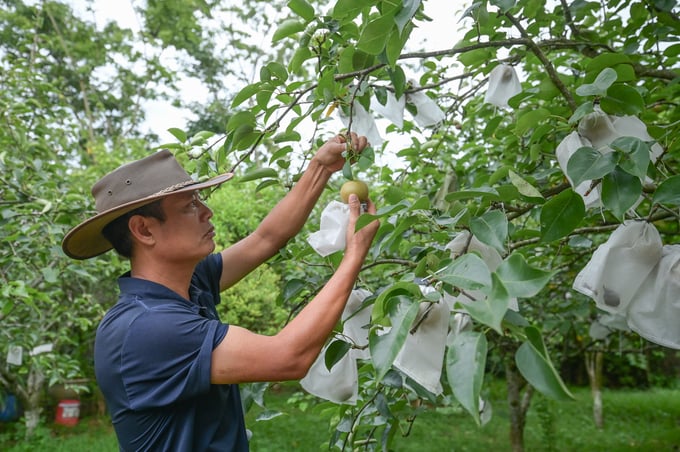
Mai Duc Thinh, Director of the 19/5 Agricultural Development Service Cooperative, stands beside a pear orchard bearing fruit. Photo: Tung Dinh.
Traveling from Hanoi to Son La along Highway 6, one can easily spot a giant, colorful windmill on the hillside just past the welcome gate of Moc Chau district. Nearby, the striking sign of the “Moc Chau 4 Seasons View” check-in point is nestled among lush green tea rows. Surrounding it are greenhouses for grapes and orchards of pears, peaches, and plums, all bursting with fruit, managed by the 19/5 Agricultural Development Service Cooperative.
This 10-hectare facility serves multiple purposes: it’s a cultivation area, research center, processing facility, business hub, and tourist attraction. Each season brings its own variety of fruits, drawing many visitors to the cooperative’s headquarters for sightseeing and shopping.
Many also come to hear Director Mai Duc Thinh share his farming expertise. When discussing agriculture, Mr. Thinh speaks with passion for hours and never hesitates to share his knowledge with those eager to learn.
Though approaching 60, Mr. Thinh’s tall stature, tanned skin, and strong features, combined with his signature wide-brimmed felt hat, give the impression of a cowboy from the American Wild West. Many who meet him for the first time are surprised to learn his age, often mistaking him for someone in his fifties.

The 10-hectare premises of the 19/5 Cooperative headquarters are located next to National Highway 6. Photo: Tung Dinh.
Born in 1967 to parents from the Northern Delta who moved to the new economic zone in Moc Chau, Mai Duc Thinh traveled extensively, from East to West, before deciding to return to this plateau to revive plums and achieve prosperity with his community.
In his youth, this “cowboy” ventured to Eastern European countries to study and work. He moved from one country to another, learning how Europeans handle agricultural products, process them, and generate income from them.
“Since the 90s, they have had a closed production system, economical irrigation, preservation methods, and proper packaging with barcodes and eye-catching designs,” he said about European farming practices.
In 1997, after spending 10 years in the West, he returned home with the dream of getting rich from plums. However, he found that the local specialty was so abundant that no one was willing to buy or even take them for free.
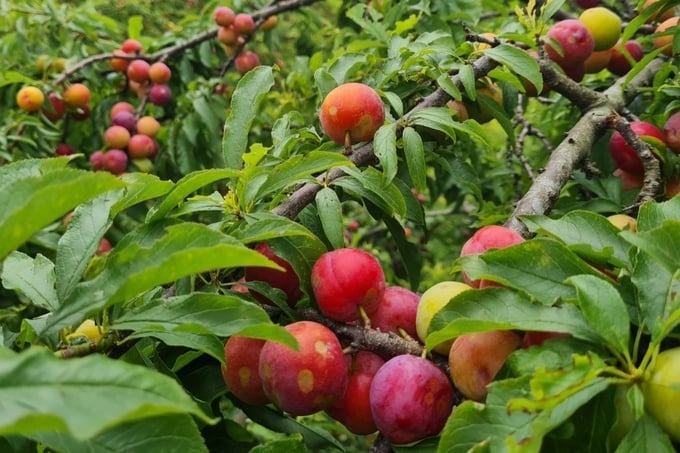
Moc Chau plums have now found a place in the market. Photo: Tung Dinh.
At that time, plums were grown everywhere in Moc Chau. While dairy cows and tea had farms and companies for production and business, plums were mostly grown spontaneously by the people, and their success or failure depended heavily on the season and traders.
Because of this spontaneity, there was a surplus of plums. The output was large, consumption was poor, and preservation methods were lacking, making it difficult to transport them far away. Many times, they were simply discarded. “At that time, I also bought and sold them in other provinces, but I couldn't keep up. There were also damages and losses due to poor preservation, sometimes I had to dump a whole truckload,” the director of the 19/5 Cooperative recalled.
According to Mr. Thinh, there were times when plums were so plentiful that they were piled up everywhere. “When I was traveling from Hanoi, sitting on the bus, I could smell the sour aroma and knew I was in Moc Chau,” he said. People had to take them away to other places because they were afraid the soil would become sour. Feeling sorry for the local specialty fruit and determined to achieve prosperity with the people, in 2000, he and some members of the Gardening Association of Moc Chau Farm Town established the 19/5 Agricultural Development Service Cooperative.
Seeing plum trees as their children, Mr. Thinh and the 13 original members of the cooperative found every way to raise these children to have the best qualities.

Plum Products Processed in Various Ways Serve Visitors to the 19/5 Cooperative. Photo: Tung Dinh.
From the dense plum forests with small fruits, the people of Moc Chau have learned to improve and care for the trees, helping them grow strong and produce large fruits. This effort has built the Ruby plum brand, with each fruit weighing up to 20-25 grams, twice the size of normal plums.
After 10 years of effort with two foreign programs, Moc Chau plums had yet to make a significant market impact, especially as fresh fruit. It wasn't until 2017-2018 that large, plump plums appeared in abundance in Moc Chau.
“When we see big, beautiful fruits that sell for a good price, there's no need to mobilize anymore. People compete with each other and learn from each other how to cultivate in a new way,” the director added.
According to Mr. Thinh, it was a long journey. Initially, people felt sorry for the branches and trees and didn't dare to prune them. However, once they saw the benefits, they competed to do it: “Plum growers in Moc Chau have changed their awareness of plant care.”
Currently, the 19/5 Cooperative has about 30 technical and management staff. The rest are seasonal workers, depending on the harvest time of each product.
“Using seasonal labor not only helps the cooperative’s apparatus not become cumbersome but also creates more jobs for people,” said Mr. Mai Duc Thinh.
Another important point is that when people come to work for the cooperative, they share knowledge and effective farming techniques, which they can then apply to their family gardens.
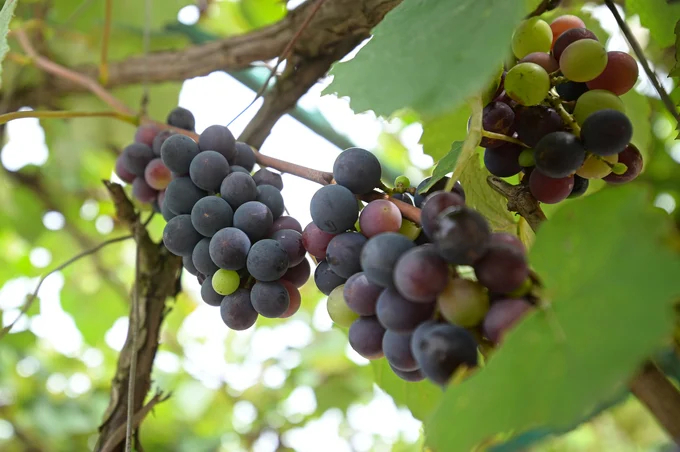
The laden wild grape garden of the 19/5 Cooperative attracts tourists. Photo: Tung Dinh.
Agricultural circle
Having revived the plum tree, Mr. Thinh and the 19/5 Cooperative did not stop there. They continued to expand their agricultural ecosystem with five circular areas. The first is input materials, including seeds, fertilizers, and pesticides – essential factors in agricultural cultivation.
Talking about his difference from other agents, the Director of the Cooperative explained: “Comparatively, it's like medicine. If agents are only pharmacists selling medicine, we combine both – diagnosing and prescribing medicine.”
Realizing that this is a complicated and laborious field, many times they wanted to stop. However, because other cooperatives in the district need a place to share, consult, and guide, 19/5 continues to maintain this role.
The second area is production. After more than 20 years of development, the 19/5 Cooperative has grown to include 55 members and is associated with more than 200 farming households, covering a growing area of up to 100 hectares of various agricultural products. This includes 20 hectares of plums meeting VietGAP standards.
The cooperative’s headquarters also serves as a research institute for many different crops, facilitating the monitoring and evaluation of their suitability for cultivation before large-scale production.
“At our headquarters, we have seven plum varieties, four peach varieties, three pear varieties, five rose varieties, and three grape varieties,” said Mr. Thinh. Planting multiple tree varieties at the headquarters helps quickly record changes due to natural conditions, allowing the cooperative to develop timely solutions for its entire growing area.
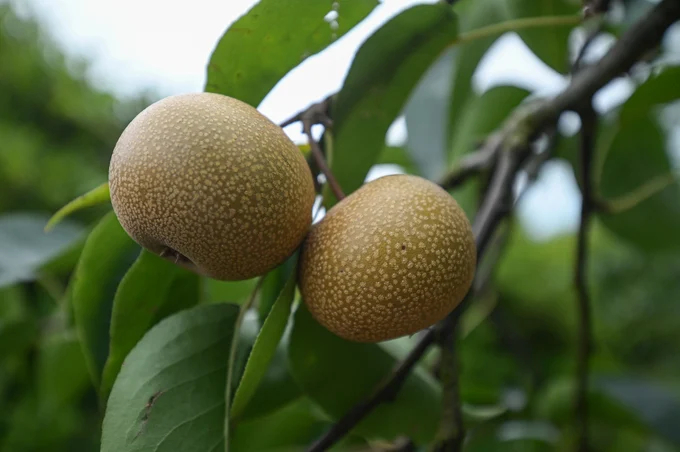
Temperate pears are grown at the 19/5 Cooperative. Photo: Tung Dinh.
The next area is agricultural processing. Production is good, but ensuring output is crucial. Faced with an excess of plums, Mr. Thinh researched and learned how to process them, starting with wine. Since 2004, the 19/5 Cooperative has been able to brew wine from plums. Although initially, sales were modest, this process addressed the surplus. “That year, we brewed 1,000 tons of plums to make wine. Some batches were good, some were bad, but we were very enthusiastic about handling the excess plums,” he said.
Today, in addition to plum wine, the 19/5 Cooperative produces dried products from temperate fruits such as apricots and mangoes. The market and customer base for these products have stabilized. In addition to fruit trees, the cooperative also invests in producing short-term temperate vegetables to generate income for its members. These vegetables are mostly sold to clean food stores or hotels in Hanoi.
The cooperative faces a significant amount of by-products from green vegetables and waste from plum wine production. To address this, they have invested in livestock farming. The waste from livestock farming is used as fertilizer, combined with microbiological products for organic agricultural production. Currently, in addition to black pigs raised in concentrated areas far from residential zones, the cooperative also raises chickens and rabbits at the headquarters, both for production and tourism purposes – the final field in the “agricultural circle” of the 19/5 Cooperative.
Tourism not only brings direct income but also serves as an effective method to promote Moc Chau agricultural products and solve problems for small-scale producers who do not have enough goods to sell on-site to tourists.
Translated by Quynh Chi
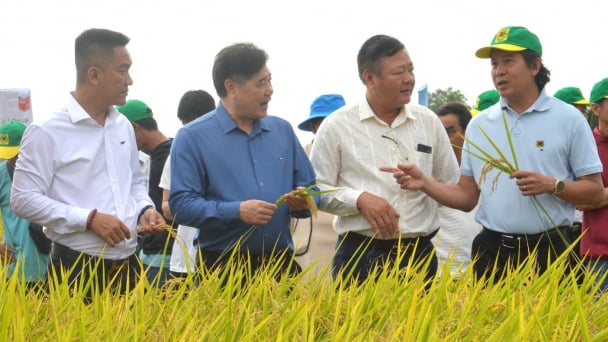
(VAN) The results from pilot fields are catalyzing the expansion of the One million hectares of high-quality, low-emission rice project in Kien Giang.
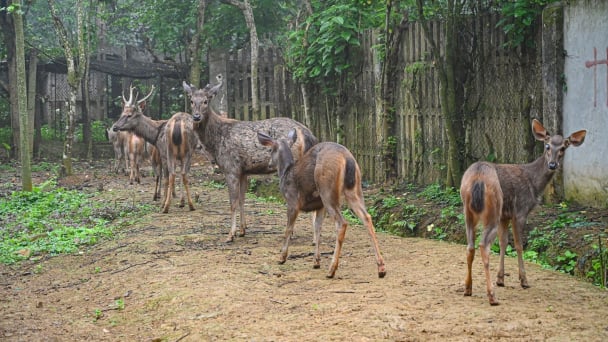
(VAN) On the morning of April 11, Cuc Phuong National Park received 18 individuals of endangered and rare wild animals from Da Nang city.
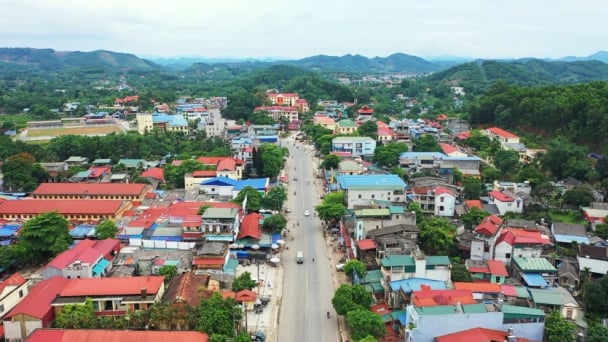
(VAN) FAO supports Vietnam in enhancing survey sampling techniques for the 2025 nationwide agricultural and rural census.
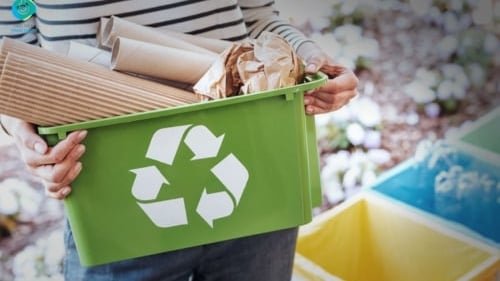
(VAN) By participating in the green transition, manufacturers become an indispensable part of the circular economy, contributing to resource optimization and environmental protection.
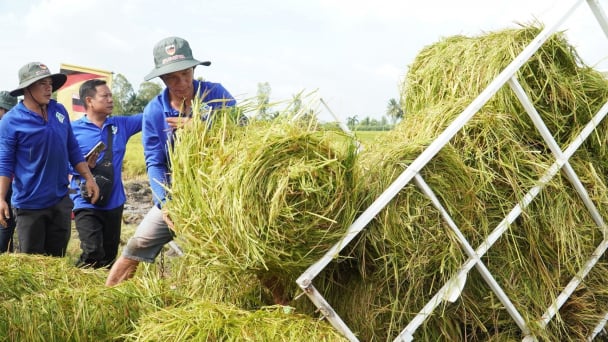
(VAN) The One Million Hectares of High-Quality and Low-Emission Rice Program can generate nearly 14 million tons of straw annually, posing an urgent requirement to diversify straw-based products.

(VAN) This figure was recently announced at a conference held in Yen Bai, focusing on climate-resilient infrastructure development for ethnic minority regions.
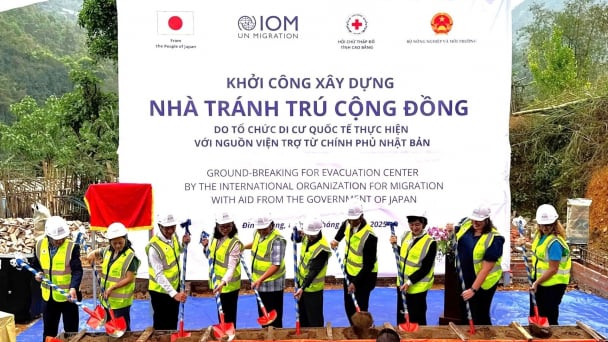
(VAN) The evacuation center is a practical work in efforts to respond to natural disasters and adapt to climate change in vulnerable areas.